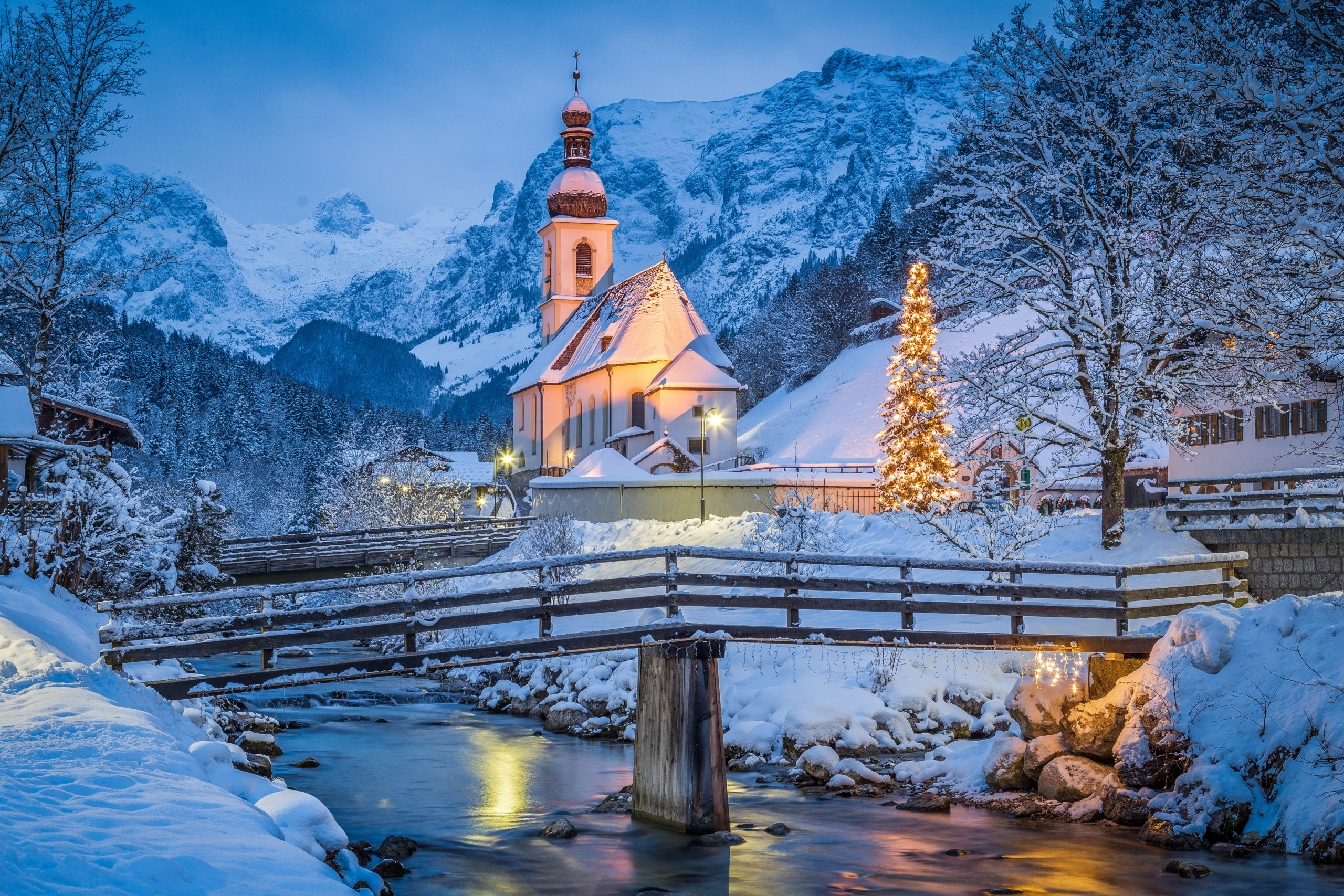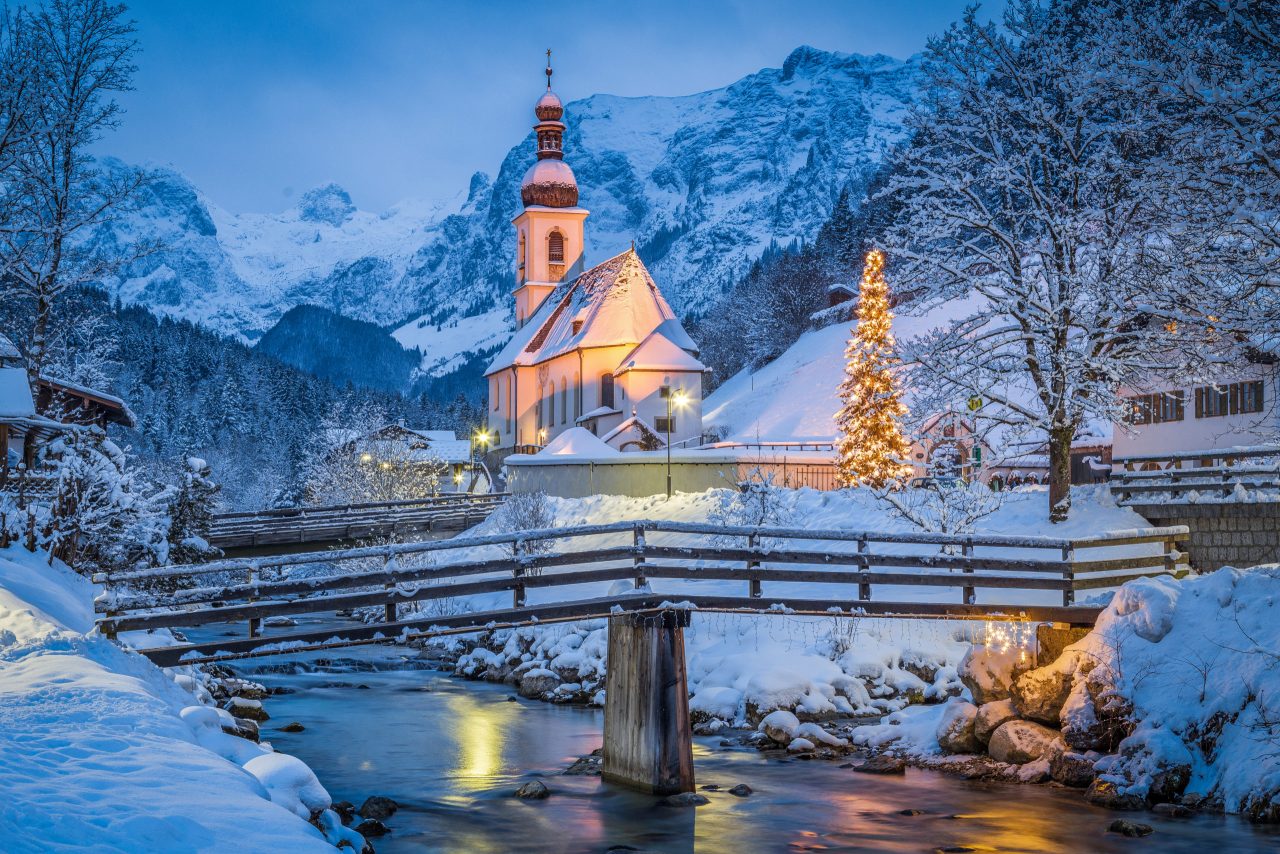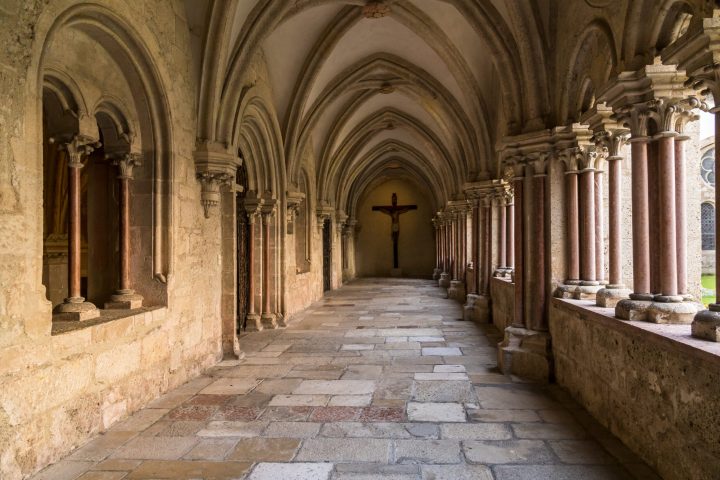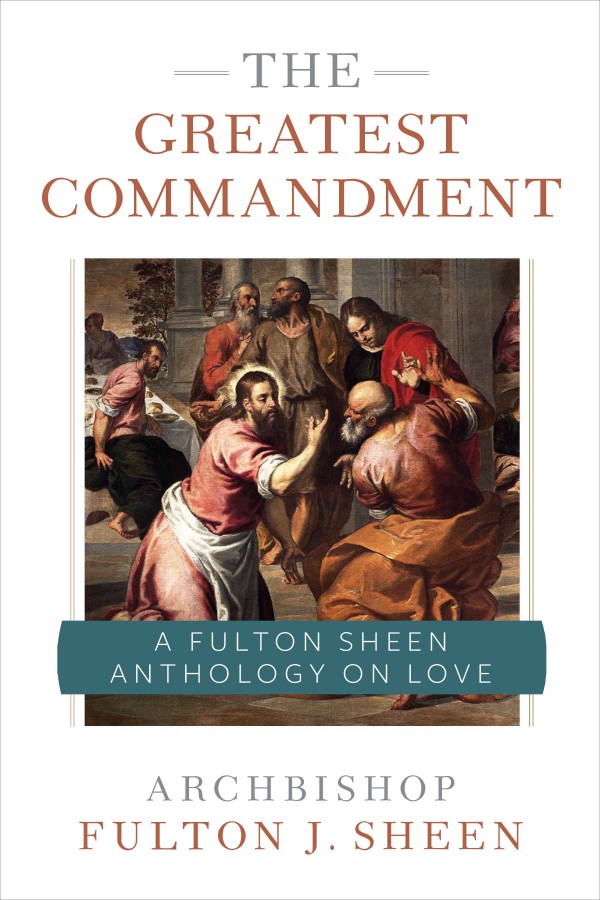
On Christmas Eve in the morning, the Church sang, “This day you shall know that the Lord is coming, and tomorrow you shall see His glory,” and, “Be ye lifted up, O eternal gates, and the King of glory shall enter in,” and also, “The glory of the Lord shall be revealed, and all flesh together shall see, that the mouth of the Lord hath spoken.”
These promises will be fulfilled during Midnight Mass. The giving of gifts must have been advanced to Christmas Eve in most Catholic countries in order that the grown-ups may devote themselves with a quiet mind, unhindered by any commotion, to these great mysteries of the Holy Night.
And so Christmas Eve is the day for our children. When the little ones get up in the morning, they find the door of the living room closed, and no one is allowed to go in, much less to peek through the keyhole, because the Christ Child will come and bring the Christmas tree and all the gifts. Only Mother and Father may assist Him.
Christmas Eve is Confession day. Once more, we listen to the voice of St. John the Baptist, who admonishes us to prepare the way of the Lord and to do penance. When the Holy Child is entrusted into our hearts at midnight in our Christmas Communion, He shall find the place clean and swept and warm with love.
There is a certain hush all through the house. People are tiptoeing and whispering; at the same time there is an atmosphere of extreme activity. Mother and Father spend the day behind the closed doors, “helping the Christ Child.” In our house, the large Christmas tree—a twelve-foot-high, beautiful, thick balsam fir—requires a lot of time to be decorated in “the old way.” During the preceding nights, the older children have wrapped up candies in tinfoil or in tissue paper with fringed edges and have then tied red thread to candies, as well as to hundreds of cookies. They are hung on the tree first. On the lower branches, we also hang small apples and tangerines. Then come Christmas-tree decorations from our home studios—angels and stars worked in silver or brass, which will glitter later in the light of the candles. Yes, candles—because there will be six dozen small candleholders with real candles fastened to the branches. (On either side of the tree there will be a camouflaged bucket with water and a mop with a long handle, “just in case.” So far, we have never needed it.)
Next, dozens of packages of tinsel are emptied on twigs and branches; and the last touch is silver chains spinning in spiderweb fashion, criss-crossed from branch to branch. The final effect is like a fairy tale. Every so often, the mother is interrupted by a discreet knock at the closed door, and, as she comes to open it, she can just hear steps running away. Anything and everything is a big secret today. As the mother opens the door just a little, she sees either a laundry basket or a cardboard box filled with many packages, each one with its name tag. So every one of the children comes with his gifts, for everyone has prepared something for everybody else.
In a large household such as ours—when we are without guests, we are eighteen—that means a great deal of arranging and rearranging until finally everything seems to be in its place. The last thing is to put the Christmas crib right next to the tree—the crib in the cold, dark cave where Mary and Joseph have arrived last night after evening prayers.
When, finally, everything in the “Christmas Room” (as the living room is called these days) is ready, the rest of the afternoon is devoted to tidying up the house. Not only the workshops and the rooms, but also every drawer and closet is put in order. Then we all dress in our feast-day best. When it gets dusky outside, we meet in the chapel. (Before we had our chapel, we used to meet in a big bedroom upstairs.) Besides the vigil light, there is only the little flame of the Advent candle burning. We say the Rosary and sing every one of our Advent hymns, and at the end, a song to the Blessed Mother.
When we are in the middle of it, one can hear clearly the ringing of a little silver bell. A suppressed sigh can be heard coming from the little ones. This is their hour, because the bell announces that the Christ Child has come. Now we all go downstairs, and the double doors of the living room are wide open. A big Christmas tree stands there all ablaze in the light of many candles. Tables covered with white cloths are heaped with beautifully wrapped packages—gifts put there by love. First, the youngest in the family steps forward and recites the Nativity story according to St. Luke. Then we sing for the first time “Silent Night”—three verses in German and in English. (For the first time at home, that is. We have sung it many times in our Christmas programs during the last weeks, always anticipating this moment when it would be sung at home.) And then everyone wishes everyone else, not a “merry,” but a “blessed Christmas”: Gesegnete Weihnachten. After this, the mother leads everybody to his place, and, for the next hour, the room is filled with happy exclamations. Then the bell rings for an early supper. This, again, is traditional: carp with potato salad and, as dessert, Knörpeltorte.
The first one who gets up from the table is the father. When he is fully dressed in his heavy winter coat, he takes a lantern containing a burning candle and stands all by himself in the hall and sings “Shepherds, Up!”, an old Christmas carol that is sung only once a year. We never sing it earlier, and we never repeat it afterward. As all through the house the bedroom doors are opening, one by one, the family comes down and joins the father in the song. Everyone comes ready to go, and everyone carries his lantern. There we stand now and sing verse after verse—each verse a tone higher—until all of us have gathered. And then we go out into ice and snow—because in Vermont as well as in Austria, there is always a white Christmas (or almost always)—to the little village church for Midnight Mass.
Stowe, Vermont, being every bit as cold as Austria (and sometimes much colder), this trip always reminds us very much of Christmas in the old home. There, it was about a ten-minute walk to the little church of Aigen bei Salzburg,
a village surrounded by mountains. We always used to linger a little bit in front of the church, listening to the strains of “Silent Night” and “Oh, du Frohliche,” played on horns from the church steeple, and watching the many little sparks coming down the mountains—the people carrying torches and lanterns. It looked as if stars were walking down the mountainside—a lovely picture.
Now, in our new home, “Cor Unum,” in Stowe, Vermont, we do it this way: as the church is three miles away, we do not walk there. On the way home from Midnight Mass, however, we leave the cars at the foot of the hill and walk up. This is a real treat. Parts of the road go through the woods, and as we climb the hill, the snow squeaking at every step, the stars seem to glitter much brighter than any other night. And the cold, crisp winter air seems to be saturated with that peace that has been particular to the Christmas season ever since the first Christmas, when the angel announced it: “And peace on earth to men of good will.”
At home, there awaits us another treat. Supper has been early, and everyone is hungry by now, so first there are hot boiled frankfurters with dark rye bread; then, the famous Christmas punch, served with Christmas stollen.
This get-together after Midnight Mass in the Christmas Room, which is filled with that indescribable “Christmas smell”—compounded of wax candles, Lebkuchen, and balsam fir—has such a very special quality that even the word gemutlich becomes inadequate. It is hard to tear oneself away from the Christmas tree and the presents. The children, big and small alike, each take the favorite present along to bed.
STOLLEN: A rich bread with nuts and fruit
Ingredients
4 cups flour
2 cups lukewarm milk
1 teaspoon salt
2 cakes compressed yeast
or 2 packages dry
granular yeast
1 cup sugar
4 whole eggs
1⁄2 teaspoon nutmeg
1 pound butter, softened
3⁄4 pound raisins
1⁄4 cup rum
1⁄2 pound chopped
almonds
grated rind of 1 lemon
1⁄2 cup each orange peel
and citron, cut fine
Directions
Mix yeast and milk, and stir in 1 cup flour. Let rise.
Cream butter with sugar; add eggs, one at a time, and beat well.
Add lemon rind and salt; combine the two mixtures.
Add flour and nutmeg, and knead until smooth and elastic.
Sprinkle flour over the dried fruits.
Mix and add to the dough with nuts and rum.
Let rise until double in bulk.
Toss on floured board. Divide into three or more loaves. Roll out slightly,
spread top with melted butter, press down the center, and
fold over double. Brush melted butter over top; let rise until
doubled, and bake at 350 degrees for about 45 minutes.
When slightly cool, cover with plain icing.




